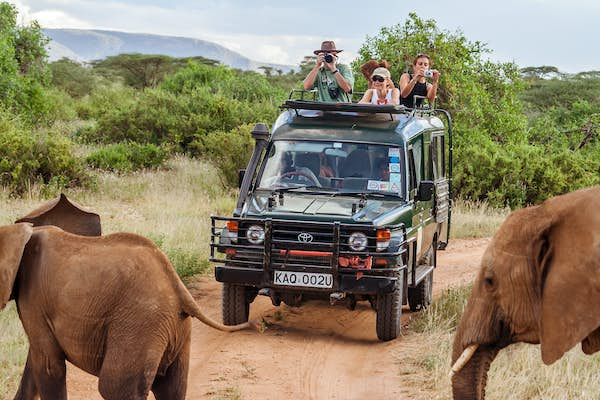From remote national parks and spectacular hikes to balmy coastal towns and the lively buzz of Nairobi, you’ll want to experience all you can on a trip to Kenya. Whether you take a taxi or hop into a matatu (minivan), this beautiful country is a relatively easy place to get around once you know your options.
For some journeys, it’s possible to travel slower and more sustainably. Sailing on a traditional dhow along the Kenyan coast or taking the train from Nairobi to Mombasa are great examples, and you’ll see so much more of the landscape on the way.
Here are our top tips for getting around Kenya, from the beaches to the Masai Mara.
Buses connect practically every town in Kenya
There’s an extensive bus network connecting larger and smaller towns, especially in western Kenya, with frequent links to the capital and coast. You’ll find services are less frequent as you head into northern Kenya. Several private companies operate bus services around the country and, for the most part, these long-haul buses are comfortable, affordable, relatively fast and safe. The newer long-haul buses often have recliner seats, and some have wi-fi.
It’s best to take bus journeys in daylight hours because of concerns over crime, so aim for morning departures for long trips. Companies such as Modern, Dreamline, Coast Bus and The Guardian Coach are reliable, but the list of bus companies is exhaustive, so ask around when making a particular journey – the company you choose will often depend on the route you’re after.
Travel slowly and take the train for long trips in Kenya
If you’ve got the time and you’re heading to Mombasa from Nairobi or vice versa, take the train. The Madaraka Express passenger train currently operates three times a day, including a non-stop night train, with journey times of between five and six hours. The current service started in 2017 and it follows the same route as the old Mombasa train.
In the days of British colonial rule, this was a sleeper train that took 15 hours. It became widely known as the “Lunatic Express” because of the harsh conditions workers were forced to endure while building it, such as attacks by dangerous animals and the spread of tropical diseases.
The track passes through some of the most beautiful parts of the country as you move from the city through the Tsavo…
Click Here to Read the Full Original Article at Stories – Lonely Planet…
